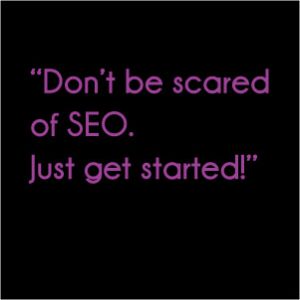Many new online business owners make the mistake of thinking that once their website is live that it will be found by customers and the traffic will flood through to their website. I made this mistake myself many years ago when I launched my first online business.
If you build it they WILL come?? Wrong. Unfortunately this is what many business owners learn the hard way after they’ve spent thousands of dollars on their website.
The truth is you could have the best looking website online but if your buyers can’t find you, it isn’t worth anything.
The online businesses that are successful are those on the first page of the search engines for the products and services they sell.
This is why search engine optimisation (SEO) is so important.
SEO relates to anything done to your website to increase the amount of “targeted” people who visit your website from a search engine including Google, Yahoo and Bing.
SEO is used to increase your websites visibility in the natural or “organic listings” of the search engines, and NOT the paid ads.
There are four main factors to SEO.
1. Keyword Research: Keyword Research is the process of finding the word/s your clients/customers type into a search engine to find your business. Keyword research is the start of the SEO process and it is vital that you get it right. You need to target the keywords that are not only going to get you traffic but that are also generic store valium going to convert into paying customers. You need to also be sensible with your research. Just because a certain keyword gets a high volume of searches don’t automatically add it into your plan. Does that keyword have high competition with millions of other websites targeting it? If it does, it may be more beneficial to target another one with less competition.
2. On-page SEO: On-page SEO is anything you do to your website that can be seen by you and your customers. On-page SEO factors includes text, page titles, page URL’s, images, onsite linking, and website load times.
3. Off-page SEO: Off-page SEO is NOT done directly on your site and can include obtaining inbound links to your website from other websites, often referred to as backlinks. Quality is certainly more important then quantity when it comes to backlinks. Aim to have backlinks from websites that have a high Google Page Rank (PR) and that are related to your industry without being a direct competitor.
4. Tracking: Measure and track everything. When you make any changes in your SEO efforts monitor what effect it has, whether it be positive or negative. You will want to track your site traffic (how much and where it is coming from), keyword rankings, and sales conversions. You don’t know if something is working if you aren’t tracking the results.
Don’t be scared of SEO. Just get started! Even the smallest changes to your website can generate excellent results. Just be consistent and build-up your strategies over time.


















I would love to hear your thoughts...